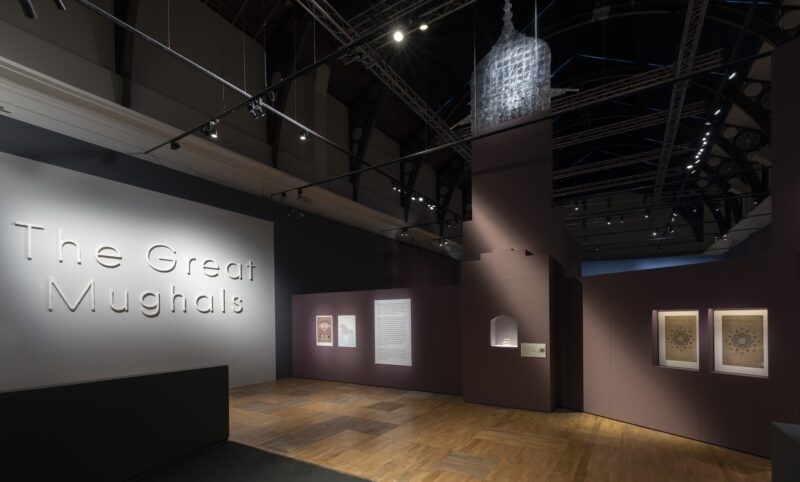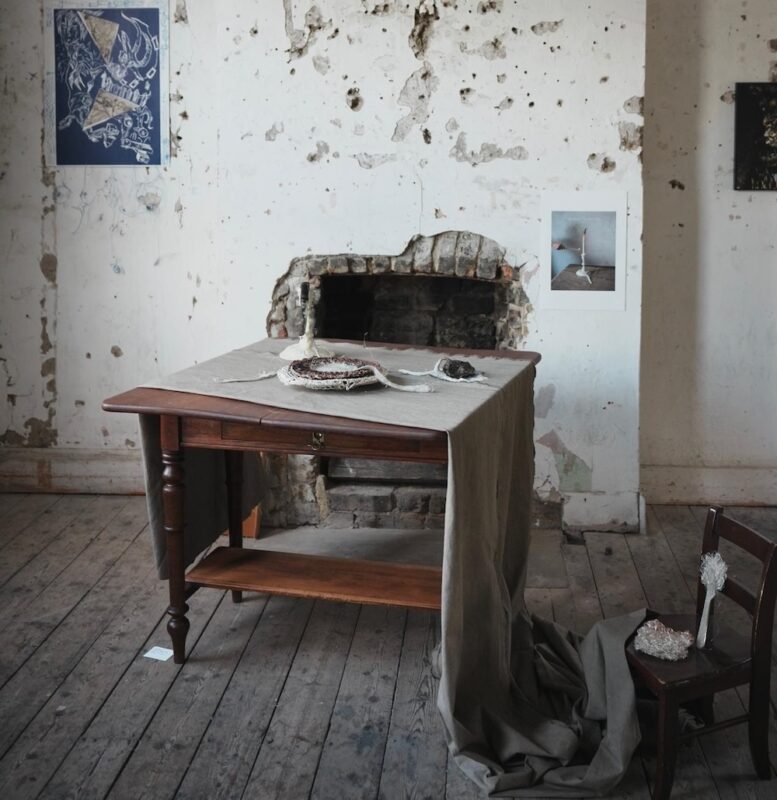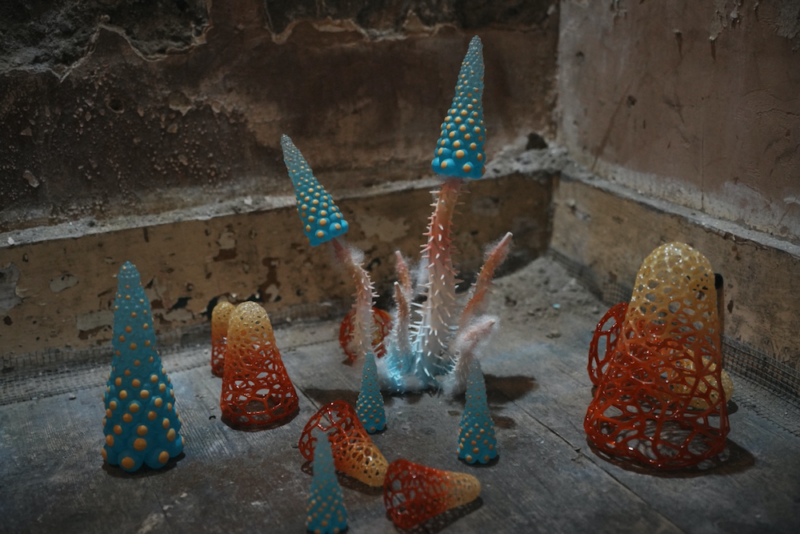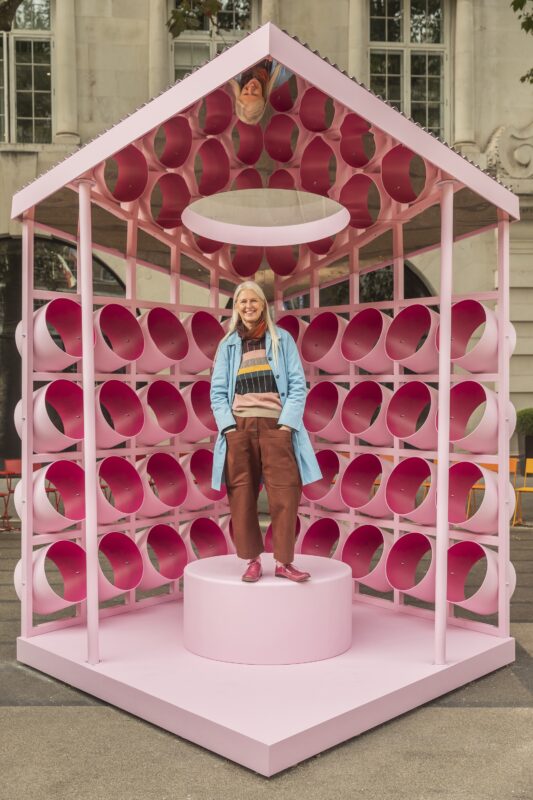London Design Festival 2023 is officially on. Taking place for nine days from 16th to 24th September, the festival puts on a programme of events, exhibitions, and installations across 13 districts across the capital.
For this year, new emerging themes are coming to the fore. One of which is modernity’s response towards spiritualism. Answering this are landmark installations ‘Aura’ by Pablo Valbuena, and ‘Halo’ by Studio Waldemeyer — housed at Sir Christopher Wren’s St Paul’s Cathedral, and St Stephen Walbrook.
Tackling the climate emergency, through ‘utopian’ or eden-like thinking feels like another theme. Whether that’s through Morag Myerscough’s ‘Nice to Meet You Again’ kaleidoscopic garden world, and the Lego Piece Garden; both of which explore what a modern garden-like ‘eden’ could be within a capital city. Or via the use of alternative materials to make that happen — whether that’s through the transformative use of cork, explored by Simone Brewster in ‘Spirit of Place’. Or via mycelium, as explored by Osmose Studio in ‘Mycelium Unearthed’.
Many hands will pass over an object’s lifetime. This idea of objects being at the centre of relational webs — and what we do about it, is explored in shows by V&A Jameel Fellow, Rima Srouji ‘But She Still Wears Kohl and Smells Like Roses’ and ‘Part Exchange’ by Andu Masebo, covering ideas of kinship, ownership, community, restitution, and more.
Read on for our roundship of shows, and emerging themes to explore at this year’s London Design Festival 2023.
Aura by Pablo Valbuena
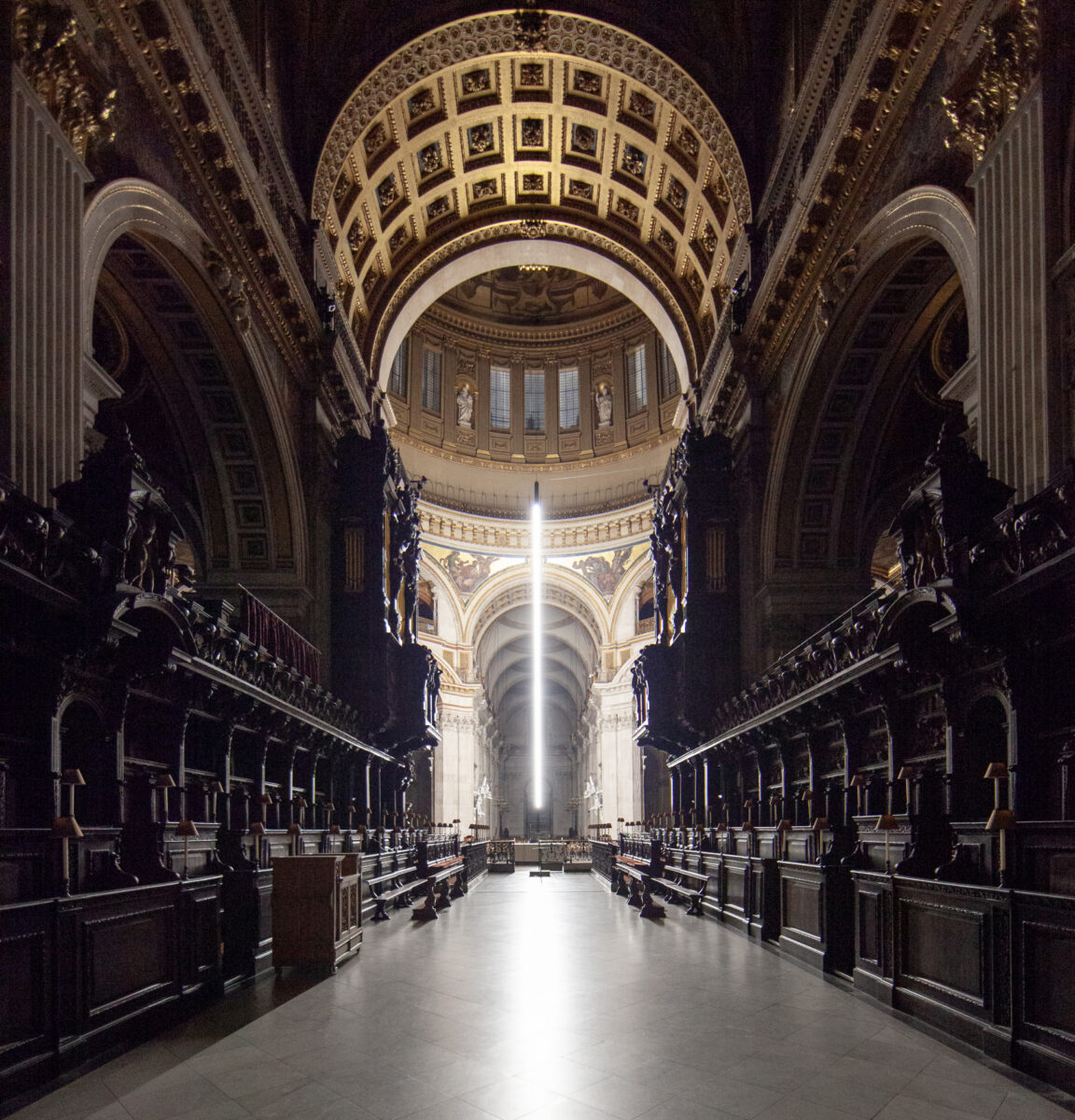
What do ‘temples’ mean today? Such ideas around spirituality, rituals, and what it all means in the context of today, are at the core of what Portuguese artist Pablo Valbuena, considers with this live installation, ‘Aura’.
Suspended from the copula of the dome of St Paul’s Cathedral, ‘Aura’ is a pulsating line of light. A kind of white light that feels celestial, but not restricted to one religion. White light is actually seen across faiths. With Catholicism, think of the artwork Caravaggio’s Conversion of St Paul (1600), where a shaft of divine white light floods in, converting Saul. Same with Islamic mysticism (Sufism), a ‘white light’ experience can symbolise the mystical journey toward union with god. White light has also been used by artists like Dan Flavin (one of his works, the nominal three (to William of Ockham), 1963), where white luminous light can feel transcendental, but not connected to a faith.
This idea of coming together towards spiritualism, whether you follow a faith, don’t, or are somewhere in between, really comes through with the second sensorial element of this installation; and that’s sound. Spanish artist, Valbuena, working with Artichoke, made it possible that the light actually is constantly a ‘live’ piece of art: it takes in, in real time, the acoustics of the space, and of the people engaging in it. Taking in these sounds, the play of light responds accordingly. So you can expect more ‘active’ responses of the light, during rituals that might create more sound, like the voices of the choir, and organ practice.
Oftentimes churchgoers in institutions like St Paul’s are split into binaries: those who follow the Christian faith, or tourists looking at the architecture, or the historical significance of the building. What installations like Aura can do is blur this binary right down. It might bring anyone who might like to come in, pause, meditate, and bring a community of people together, who might not usually come together.
St Paul’s Churchyard, London, EC4M 8AD. This is a free but ticketed event, you can book your ticket here.
Halo by Studio Waldemeyer
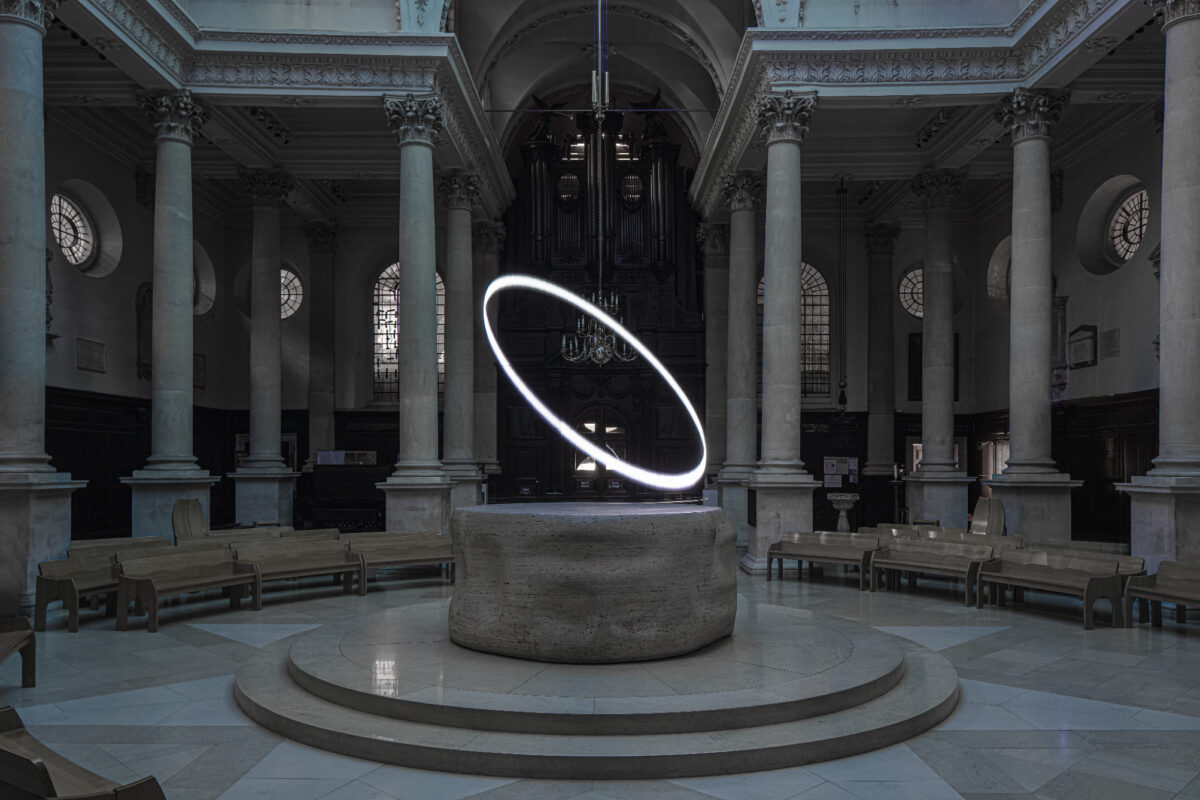
Very similar themes are explored here in another of Sir Christopher Wren’s lesser-known (but still architecturally significant), church of St Stephen Walbrook. Wren designed the church as a kind of ‘test run’ before St Paul’s and geometrically speaking, it’s one of his most perfectly realised architectural projects. It makes it an equally fitting venue for this installation: Halo, by Studio Waldemeyer.
Similarly suspended by the copula of the dome, this installation is rather a light-bouncing pendulum that makes circular rotations, as opposed to a static singular line of light, like Aura. And instead of taking in sounds, Halo is packed with technology, whereby it responds to the cyclical movements the pendulum makes, as well as the speed at which the rotations are made.
To the naked eye, you simply see a bead of white light, moving up and down the pendulum, but if you take a photograph of this light display with a slow shutter speed, a circular halo (or ‘nimbus’, in Christianity) appears.
Evoking ideas of mesmeric meditation, calmness, ritual, and spirituality, Halo covers similar thematic ground to Aura.
St Stephen Walbrook Church. Check opening times on the London Design Festival website.
Part Exchange by Andu Masebo
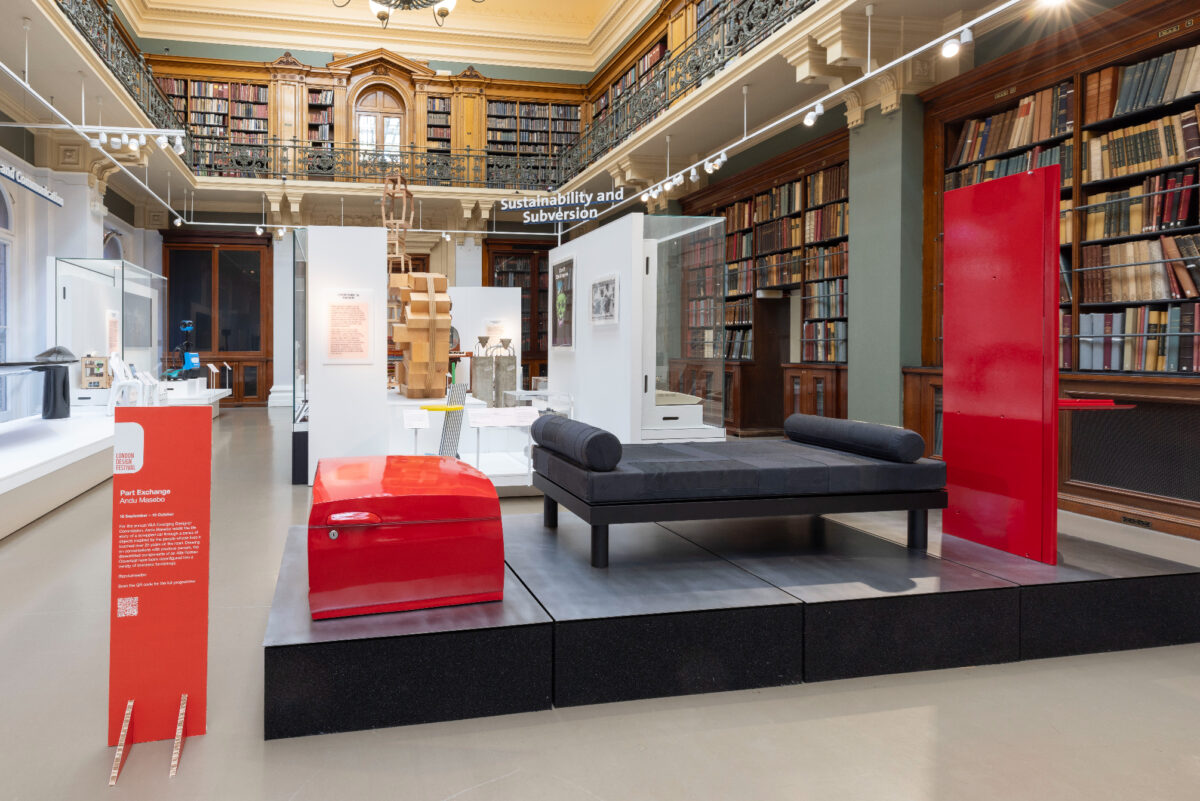
‘People either love cars or they hate them’ is how designer Andu Masebo introduced his installation at the V&A, Part Exchange. ‘So I really wanted to draw on that energy’.
As part of the Emerging Designer commission, Masebo deconstructed an Alfa Romeo Cloverleaf 145, a car going to scrap after 25 years on the road. It was a physical process, dissembling the components of the car, and reconstituting the pieces into a variety of domestic furnishings. One of which is a daybed, where you can still see the branded fabric. The other is a shelving unit, and finally: a chest made in part with the car door.
This process of dissembling was also a relational one. Masebo spoke to the car’s previous owners where stories of human life inevitably tumbled out, ranging from the trivial (one owner drove the car to the shops), to the more profound (the scrapping of the car made one owner reflect on the passing of her late husband). You can see some of the conversation quotes on the floor around the reconfigured car parts.
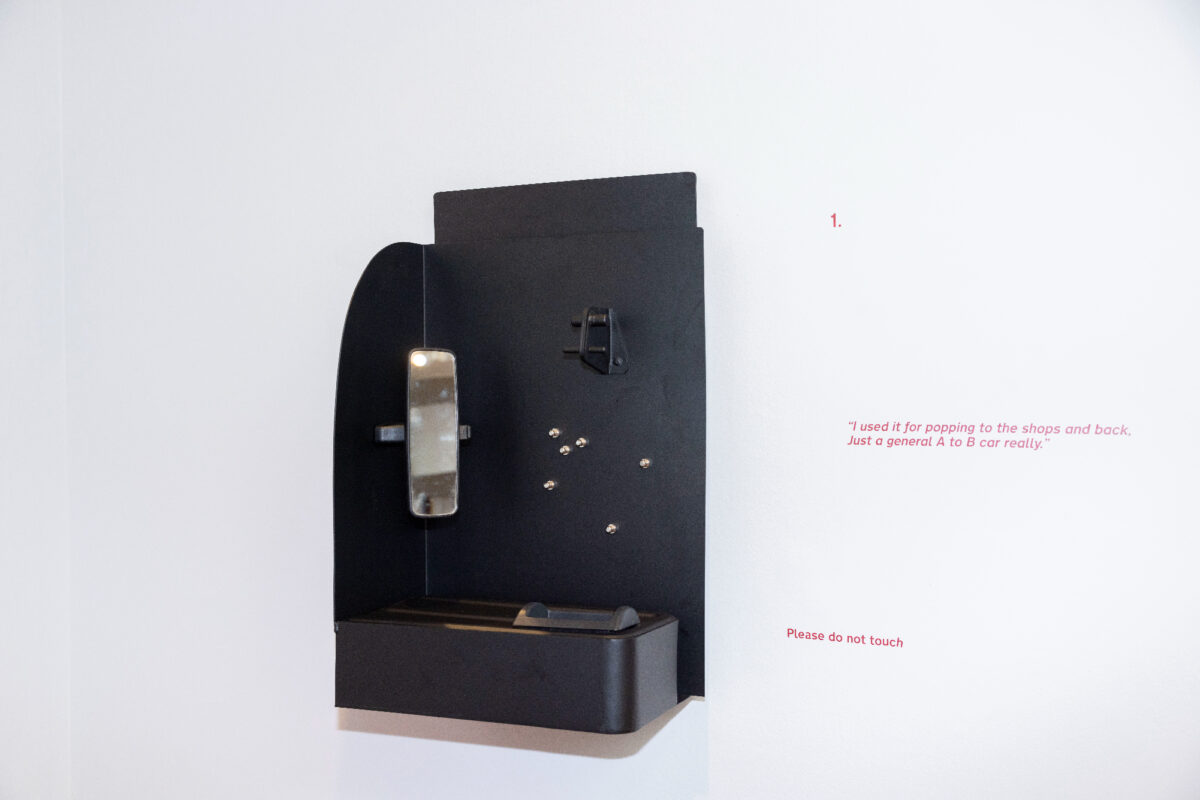
It follows the history of Duchamp’s readymades, to Dada’s Meret Oppenheim, for example, but this work doesn’t feel like it is an object reassembled purely to shock. It feels more emotive, using these reconstituted objects to speak about all the hands that have passed through it: the hands of labour that made the car parts, the hands of the owners that opened the door over and over again, through to the hands helping its way into the scrap. In this way, it possibly addresses our collective inertia on where many of our everyday objects come from, and who came before them.
V&A, Design 1900–Now, Room 74, 74a & 76. ‘Part Exchange’ runs until 15 Oct
Spirit of Place by Simone Brewster
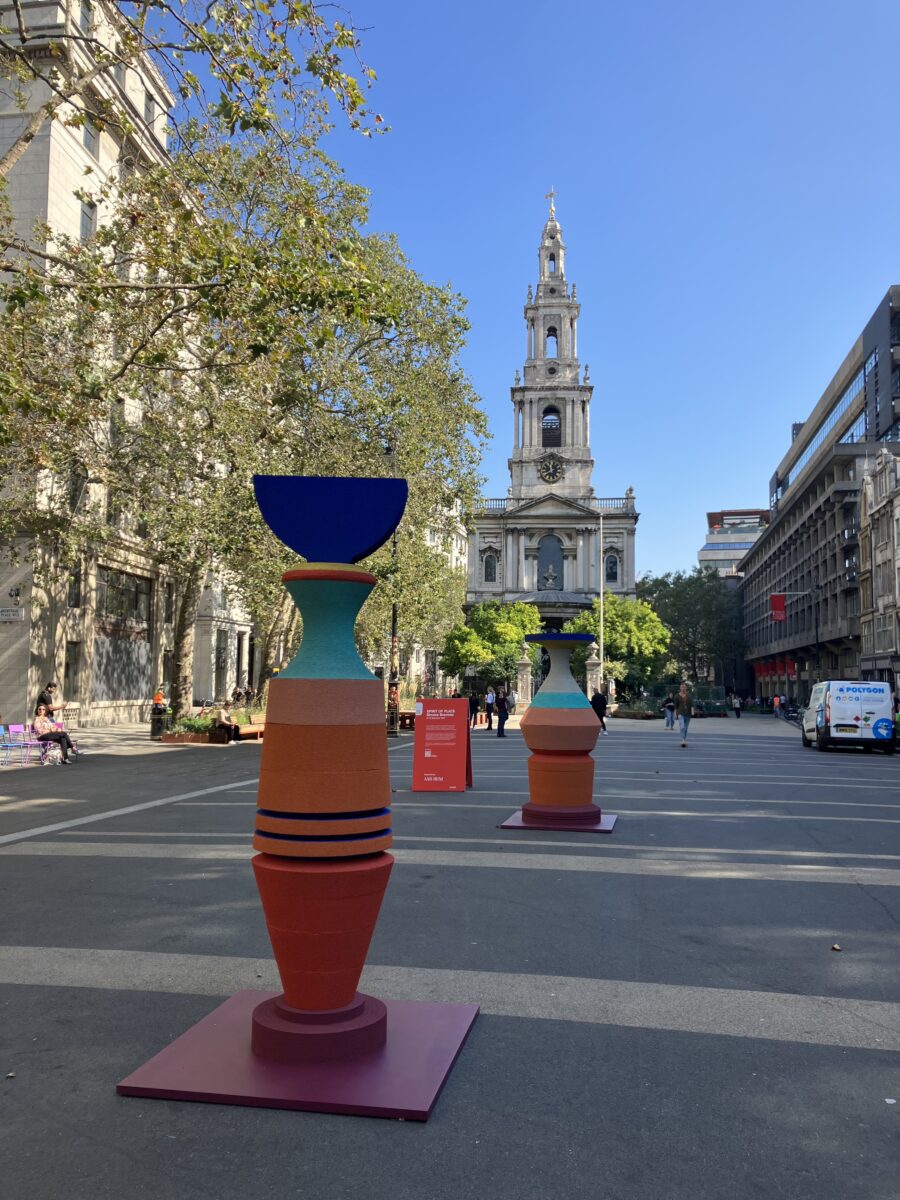
For those interested in the future of regenerative materials within the context of a climate emergency, Simone Brewster throws one material to the top of the conversation: cork.
In a recently pedestrianised square at Strand Aldwych stands a family of objects. Curvaceous, colourful, and pot-like, these sculptures are all made of cork and intend to represent and celebrate Amorim’s cork forest at Herdade de Rio Portugal.
Commissioned by London Design Festival, the installation’s namesake also plays on more spiritual notions of ‘genius loci’, a ‘spirit of place’, where Brewster wanted to evoke the essence of this Portuguese forest here in London.
The process in which this cork is produced at this forest is a regenerative one. Amorim is in fact, in response to the climate emergency encouraging strains of trees to grow that are more resilient to drought. Brewster also emphasises the regenerative process that Amorim uses to make cork, mentioning that the cork dust that blows off in production will be used as biomass to power machinery in the factory.
Brewster explained that the forest is equally where she got the colour choices from for this family of cork objects: the blue, from the blue skies of Portugal, the light green, from the lichen, and the burnt orange, a colour which appears when the tree is stripped.
Strand Aldwych, WC2R 1ES
But She Still Wears Kohl and Smells Like Roses by Dima Srouji

Palestinian architect and artist Dima Srouji have been a Jameel Fellow at the V&A, where she planned to simply catalogue glass artefacts from Palestine and Greater Syria — but her research showed that really the vessels’ history is a military history, and really, a story of violence.
Srouji then focused on eight vessels at the V&A, that formerly contained cosmetics like kohl, that had been owned by women in Palestine and Greater Syria.
But instead of trying to find out its exact histories, she imagined what they might be. So with artisans Srouji has worked with for years in Palestine, she commissioned them to create exact replicas, or ‘forgeries’, for London Design Festival. Such artisans still currently produce goods for the black market to unsuspecting American tourists in Palestine.
Next to these replicas, you’ll see corresponding tags of Srouji making speculative imaginings of what life said vessels might have had. Such as, who they might have belonged to, and presciently, who they should be returned to. Tags, for example, that read: ‘Flask for rose oils exhumed with lovers. Return to Bethlehem.’
Replacing the original V&A glass vessels that Srouji researched, in their place, she inserted ‘tomb cards’. Her tomb cards are a response to the notes, jottings, and drawings that were often made by excavators — sometimes drawings of bodies, and where the objects were exhumed next to them.
Such responses: the tomb cards, and the vessel replicas call us to consider the context in which we view Palestinian glassware at the V&A museum. The show is a reflection of the objects’ past, but also the future, because creating these replicas also calls us to consider the value of Palestinian artisans, and their wares today.
V&A, Contemporary glass landing, Room 131
London Design Festival, – 24th September 2023, londondesignfestival.com
